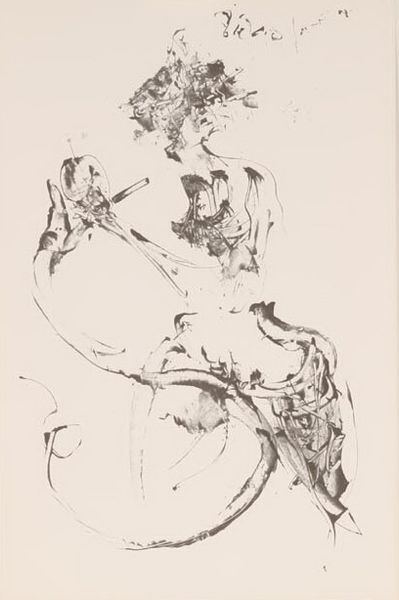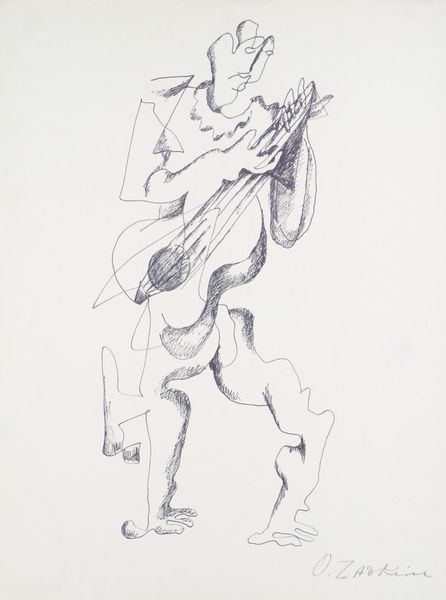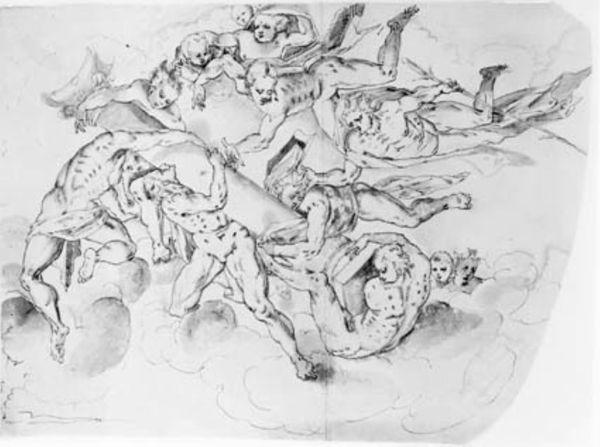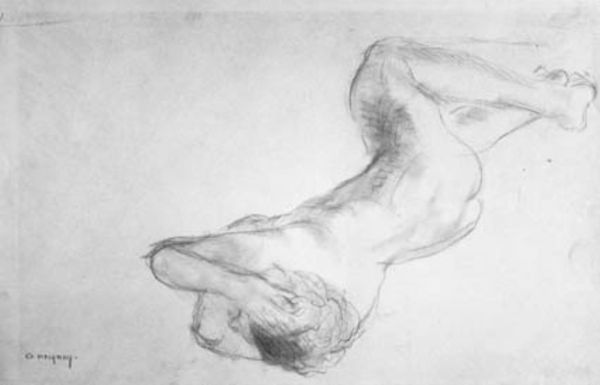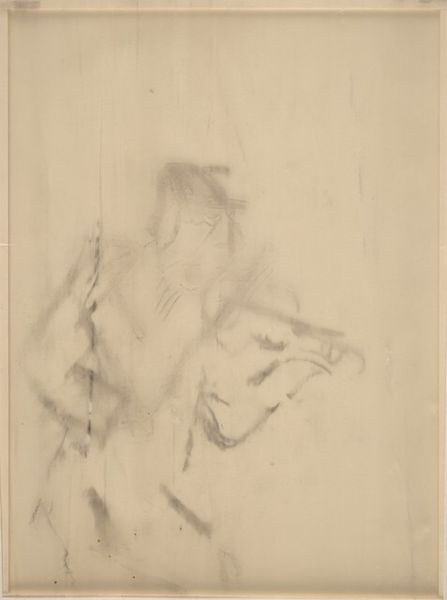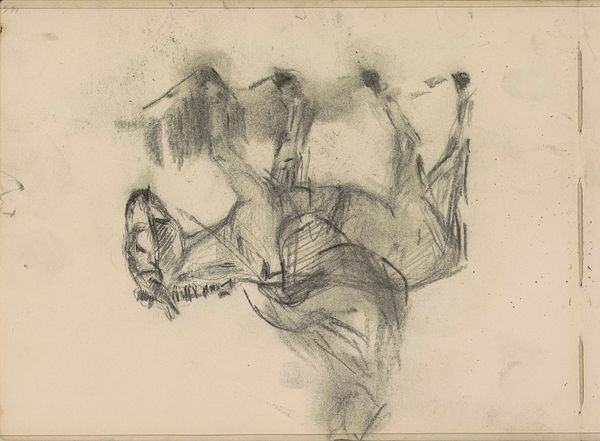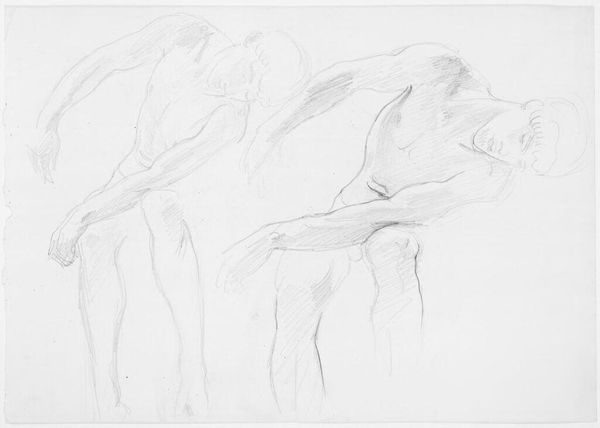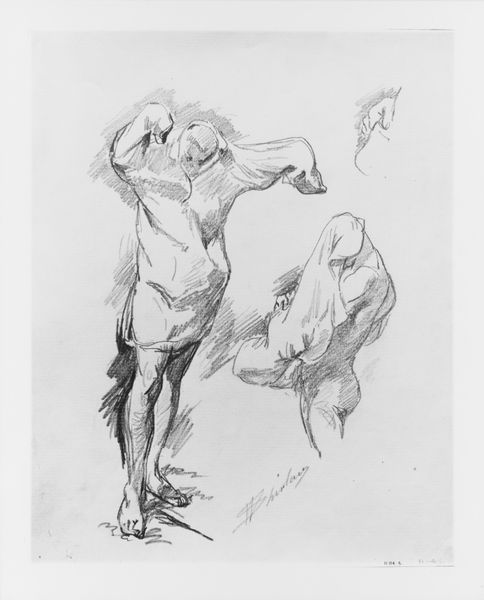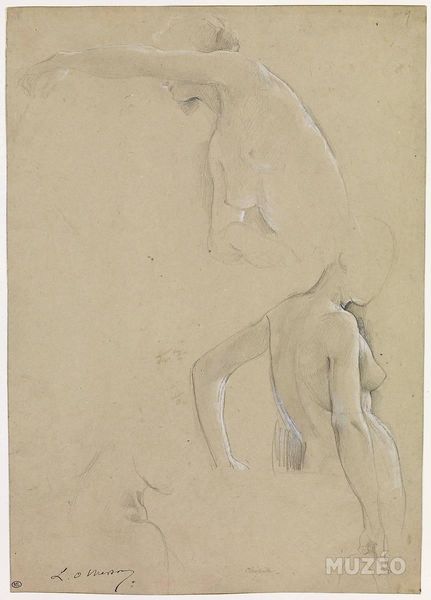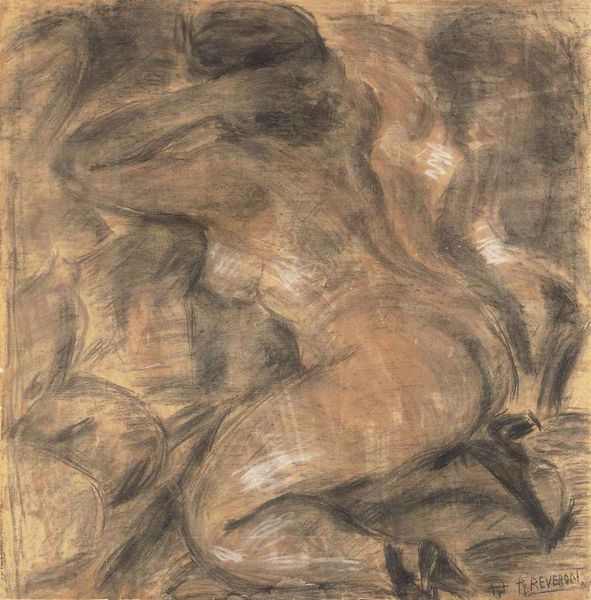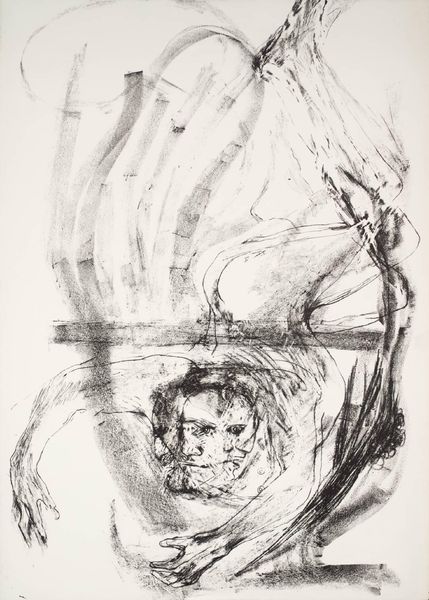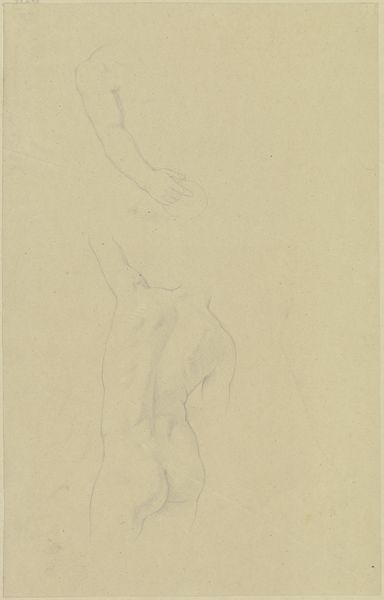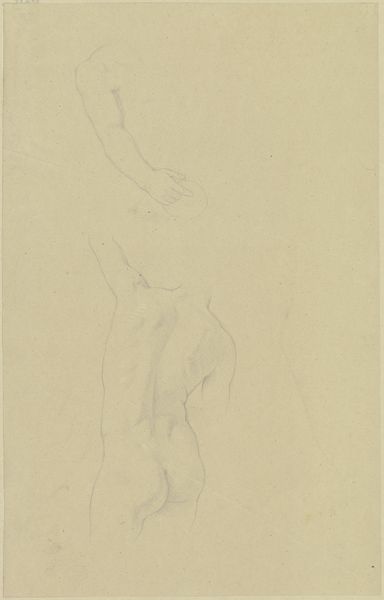
drawing, pencil
#
portrait
#
pencil drawn
#
drawing
#
pencil sketch
#
charcoal drawing
#
figuration
#
pencil drawing
#
pencil
#
pencil work
#
academic-art
#
nude
Dimensions: 370 mm (height) x 276 mm (width) (bladmaal)
Curator: This is "Seated Model with Hands Behind Her Head," a pencil drawing by Odilon Roche, who was active from 1868 to 1947. You can find it here at the SMK, the National Gallery of Denmark. Editor: My first thought is of fleeting impressions—a captured moment, almost dreamlike in its ethereality. The use of pencil is so delicate. Curator: Indeed. Let's consider that the academic style is also at play here. What does it mean to create a seemingly ephemeral work with traditional, highly structured means? Editor: Good point. The materiality seems to push against its formal presentation. The slight smudging of the pencil lends an air of immediacy. How do you reconcile that with the social expectations around academic art, the implied patron and viewer? Curator: Well, it invites a certain tension, doesn't it? Academic art was tied to power and status, often depicting idealized scenes for wealthy patrons. Roche is using the skills associated with this tradition to render the human form without idealization, almost as if he's deconstructing the act of looking. This work is a product of his time, but it is also speaking against it. The pencil and paper available for sketching provided him access, while the nude theme created dialogue for high-class audiences and art professionals of that era. Editor: It is also interesting to note the intimacy. Even with the title it is hard not to view this as academic art and to look for any meaning beyond aesthetic pleasure. Curator: Absolutely. What are we to make of her pose? Arms behind her head. Vulnerable? Confident? The form defies the classic notions of female portrayal. Is it perhaps intended to disrupt our expectations, forcing a fresh gaze on the female form stripped bare both physically and conceptually? Editor: It seems there's a dialogue here about labor itself—the labor of the model, the labor of the artist, the labor embedded within artistic traditions and its reception. This artwork is just an object without an artist, without the paper and the labor to sketch it; it cannot become the nude we discuss. Curator: Ultimately, Roche’s seemingly simple study urges us to interrogate how artistic conventions reflect—and perhaps subtly subvert—the complex socio-cultural landscape of their time. Editor: So, "Seated Model" offers us more than just a visual experience; it prompts a thoughtful engagement with artistic heritage and social history, skillfully layered into something drawn using the everyday object of the pencil.
Comments
No comments
Be the first to comment and join the conversation on the ultimate creative platform.
